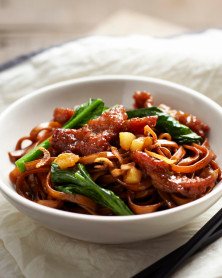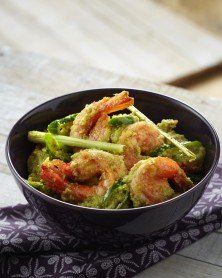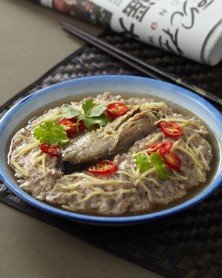That is the wonder and beauty of such heritage home-cooked recipes – we get to have a taste of our history without ever having been there, like stepping back in time.


How old were you when you started cooking: When I was 30 years old.
Personal wish related to cooking: I wish to have time to try out more new kueh recipes for my family and friends.
Christina Chew Kim Lan , "Maria" to my children
9-layer kueh, also known as九层糕 in Chinese, or Kueh Lapis in Malay, is a well-loved Singaporean tea-time treat, famous for its nine distinctive colours. In my family, we sometimes eat this kueh for breakfast or dessert. When we were young, my cousins and I each had our own style of eating it; some of us liked to savour it layer by layer, while the rest couldn’t wait to chomp it all down.
My mother took many years to master the technique of making this Peranakan kueh. She was drawn towards its colourful visual appeal, and more importantly, its delicious blend of coconut and pandan taste. She first tasted this home-made kueh from a relative’s recipe. She was awestruck with the smooth and rich texture, and brought a few for her friends, some even commented that it was better than the commercial ones sold in the shops. Through this accidental “market research”, she requested for the recipe, tweaked it over several attempts, and even went out to different bakeries to taste their versions of the 9-layer kueh, and finally came out with a winning recipe that suited our family’s taste buds.
Many people have since asked her for her secret recipe. My mother, whose greatest joy in life is seeing people enjoying her food, is both flattered and honoured. It brings her great pleasure to have the opportunity and a platform like My Singapore Food to pass down her recipe to the next generation. It was also through this opportunity that I had the chance to sit down and find out about my family history.
My great-grandmother used to sell this colourful kueh. She passed away before I was born. I grew up eating this kueh, so I felt as if I knew her, even though we never met.
In a lot of ways, home-cooked recipes are our connection to our ancestors and family line. We get to know a part of what made us who we are today. That is the wonder and beauty of such heritage home-cooked recipes – we get to have a taste of our history without ever having been there, like stepping back in time. Recording these recipes on My Singapore Food is like creating a time machine, which goes back in history!
The making of this kueh is a carefully handcrafted process, which requires patience, dedication and love; each layer must be treated with delicacy. It is fascinating to see how a traditional kueh, with so much cultural influences, evolved, resulting in so many different versions over the generations. What is traditional can still be relevant in the present after tailoring to the specifics of the consumer without losing its roots.
The uniqueness of each recipe lies in the colours – some prefer it vibrant, some subtle. Whichever the preference, most of us have our own special happy memories as we eat it the way we like – layer by layer, or a big bite of rainbow goodness.





